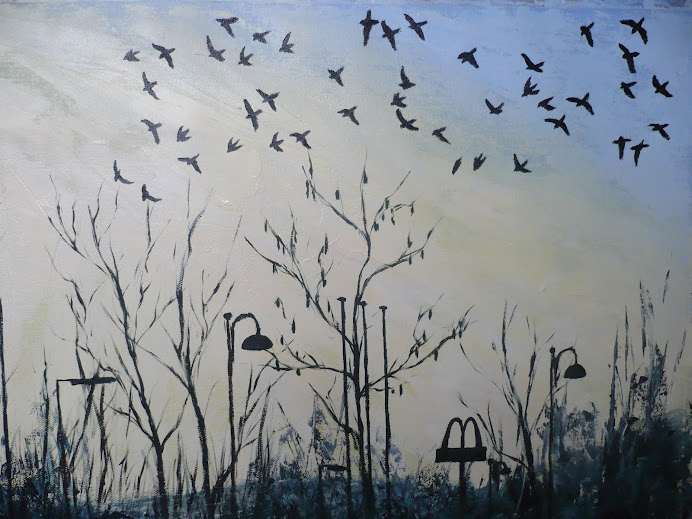I've managed to find a website featuring the work of Picasso in the Picasso Museum in Barcelona.
http://www.museupicasso.bcn.es/eng/collection/cont_collec.htm#p13 It contains a lot of information that I haven't been able to come across before and is very interesting, especially the reference to the "laboratory" he set up in order to better study three great paintings by Velazquez, Manet and Delacroix.
The Wikipedia page on the original painting by Velazquez also goes into some detail into the tributes paid to it by Picasso. It says that he created 58 paintings based on the painting Las Meninas between August and December of 1957. The Picasso Museum site says that he sought to create "a group of canvases with a common theme" which surely he was already doing to a certain degree, though the fact that he created 58 paintings in total takes it into a different league. He took the original composition and added his own unique style to it, which is what the website says at the end of the article, in that "the big difference between Velazquez' painting and the Picasso's is in its aesthetics."
http://www.guardian.co.uk/artanddesign/2009/feb/24/picasso-national-gallery This article in the Guardian is really interesting because it reviews an exhibition that went on in the National Gallery in February 2009 which featured many of Picasso's paintings that had been based on Old Master work. There's also a feature on the side of the web page called "More on this Story" which goes to another page featuring a gallery of Picasso images, including several that were base on Manet's "Luncheon on the Grass," one of which I used for my Logbook. The only criticism that I came across regarding the exhibition was the fact that the Old Master paintings weren't included in the same rooms as the Picasso's, whereas in Paris where the same exhibition was shown it included the original paintings right next to the Picasso's. This would have been fascinating to see which elements of the painting he decided to keep and which he decided to evolve in his own style.
It makes me look at the project we've been doing in a different way. We were asked to paint in the style of another artist, of which I chose John Piper because of the theme of a ruined building. However what the artists I've looking into for the logbook/contextual studies are artists who have taken an original painting by another artist and vastly changed its style, or aesthetics. The example that really sticks in my mind is the version created by Leon Kossof, which I copied into my logbook, where he took a painting by Rembrandt and painted it as only he could using tremendously thick paint and vivid outlines, in dramatic contrast to the refined, smooth depiction of flesh by Rembrandt.
"ART FROM ART"
However whilst looking around for other examples by artists of working in this way I also came across painting that had been copied almost exactly as they appeared in their original form. There were a couple featured in the book "Paint; A Manual of Pictorial Thought and Practical Advice" byJeffery Camp, the most striking being the painting "after Cezanne, The Black Clock" by Leonard McComb from 1988 on page 43 which has been painted wonderfully, with a vibrant splash of thick colour depicting the curve of the enormous conch shell which is featured next to the black clock from the title. But when seen next to the original by Cezanne, from 1870, it's almost an exact copy, there's slightly more colour and texture in the McComb version but there's still very little difference. The Cezanne painting itself is notable for it's early placing in Cezanne's career, coming before his mature phase of the 1890's, and looks quite flat and with a very heavy inclusion of black paint. McComb also copied part of Bonnard's "Paysage du Cannet" which was also featured in the book "Paint" on page 69, and this too differs very little from the original.
The quote from the course book "art comes from art, not from nature" has stuck with me throughout doing the "art from art" project and I've found that my opinion has changed slightly, aiming now towards agreeing with the quote to a certain degree. The other quote which comes back to me in relation to this is by John Piper, who was in turn inspired by William Blake who wanted art to occupy it's own sphere, just like poetry and music. It makes me think that music, in the way that people create it, is itself removed from nature, it obeys certain rules of harmony and vibration which are dictated by nature and physics, but is free to distort and branch off in many directions. This also is now true of art and painting, and it has indeed started to occupy it's own sphere.
This brings me back to the differences between what was asked of us in the project, to copy another style, and the different forms of copying that I've seen in other artists, and the most successful ones being those who can rake another image and make it their own. After all what I've been doing in my own logbook is to copy directly the work of other artists, and whilst this is interesting to find out more information about composition and colour mixing I would in no way consider this to be art.













